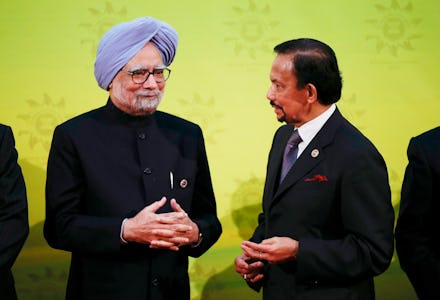ASEAN Countries Could Become Ground Zero For Another Proxy War

The Association of Southeast Asian Nations is composed of 10 states — Malaysia, Indonesia, Singapore, Brunei, Philippines, Thailand, Cambodia, Vietnam, Burma and Laos. In economic terms, the ASEAN is one of the fastest growing political entities in the world. This is no surprise when you consider the ASEAN includes more than 600 million people, as well as the world's fourth largest nation, Indonesia.
The countries in the ASEAN aim to achieve full economic integration by 2015. Given how poorly integration has turned out for the EU, that might not seem like such a good idea. But, if nothing else, at least the ASEAN can learn from the EU's mistakes. Economic integration would allow free flow of goods, services, and labor. Under the plan, tariffs would become almost non-existent. This would help the ASEAN corner more foreign direct investments, which at the moment go mostly to China and India. However, there are a series of economic, religious, and political problems that threaten to derail the ASEAN's attempts at economic integration.
The countries in the ASEAN have vastly different economies. Vietnam, for instance, follows a Chinese economic model and is seen as a “small China” since the Communist Party is opening up to free trade. Burma, a country bordering India, also has a promising economic future now that the country is free from military dictatorship.
Thailand and Malaysia, on the other hand, are already capitalist economies with a democratic systems that rely on tourism, services, and influential foreign direct investment.
Singapore has one of the most open economies in the ASEAN. The nation state relies on the banking sector, financial services and IT companies like Flextronics. Singapore has strong ties to China: The country already counts Mandarin among its official languages, has a Chinese Prime Minister, and trades mostly with the People’s Republic.
The ASEAN's many religious conflicts represent another opportunity for economic integration to fail. Both Burma and Thailand are predominantly Buddhist countries that have conflict with Muslims.
Malaysia, Indonesia, and the Philippines, on the other hand, are Muslim states where Islamic law has a small role, albeit an increasing one.
Finally, ASEAN countries have a hodgepodge of political alliances that could complicate economic advancement. Vietnam follows China’s command, but tensions in the South China Sea recently have made the two countries more distant.
We can say the same about Cambodia, is becoming more democratic and stable following the Pol Pot regime and the Vietnamese invasion in the 1970s. However, it is still one of the poorest nations in the world. The country’s premier, Hun Sen, is closely allied with the Chinese Communist Bloc.
Thailand and Philippines, are closely allied with the United States since they are both democracies. However, the 14% of the Phillippines' population that is ethnically Chinese would like to see more cooperation with China.
So the ASEAN could be a proxy playing field in the struggle between China and the United States. But there's one more country we have to add to the mix: India.
Why? Most of these countries, including Cambodia, are heavily influenced by Indian culture A notable exception is Vietnam.
India also has an economic interest in ASEAN countries. Prime Minister Manmohan Singh has dubbed his bid for maritime deals with the region the “Look East Policy”.
The ASEAN countries have to carefully plan their economic path forwards to make sure it is inclusive, knowledge-based, and resource-based, since most of these countries are already overpopulated
At the moment, though, it looks like the ASEAN nations are not set up for unity: The economic, religious, and political obstacles to integration are simply too great economic integration.